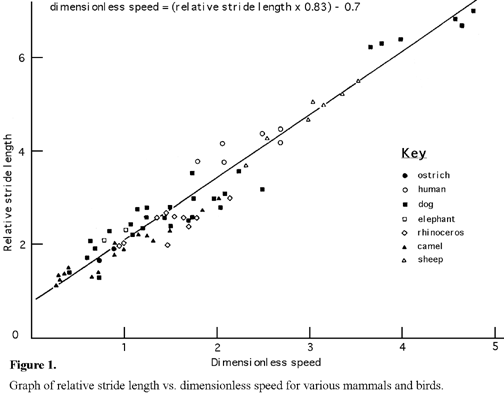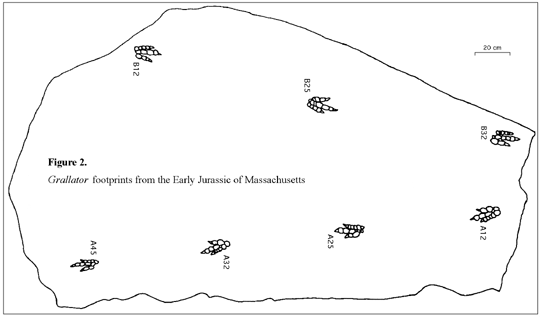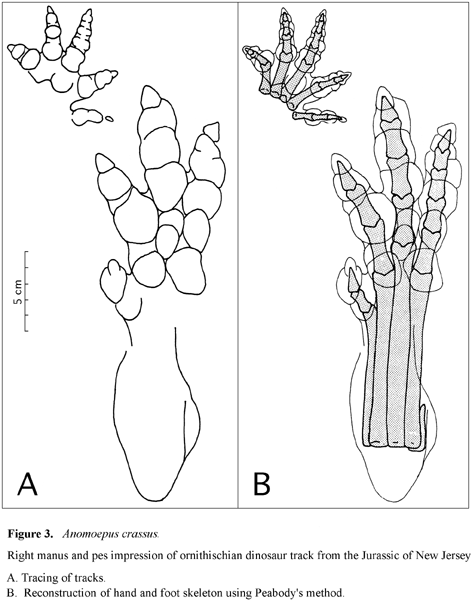Alexander's method is used to calculate the
speed of an animal from itís footprints, when the time taken to make the
tracks is unknown. We will use this method, as well as conventional velocity
measurements, on the tracks of a (hopefully cooperative) chicken. We will
also reconstruct the anatomy of a trackmaker's feet from footprints.
PART 1. HUMAN LOCOMOTION
Selected students will walk and run along a length of hallway. The number of strides taken will be noted (a stride is the distance from a homologous part of one footstep of one foot to the next footstep of the same foot) as well as the total distince traversed, and the amount of time the traverse takes. Do it for walking and running.
1. Actual velocity of the student
Measure the veocity of the student during its traverse (i. e. measure the distance the student walks and the time it takes).
V = d/t
V = velocity (m/s)
d = distance traveled (m)
t = time (s)
We will assume the footprint length would equal the student's foot length.
Use Alexander's formula to calculate the predicted velocity of the student:
DS = dimensionless speed
L = leg length (m)
g = gravitational acceleration (= 10 m/s2)
1. RSL (relative stride length) = (stride length)/(hip
height)
2. hip height (= leg length) = 4 x (foot length)
PART 2. DINOSAUR TRACKS
The TA and the class will prepare a bed of clay on which the theropod dinosaur (Gallus gallus - domestic chicken) will walk. The chicken encouraged to walk or if we are lucky, run along the clay. The amount of time the checken takes to traverse the clay bed will be timed with a stopwatch, and the length of the traverse from homologous points on the first and last track will be measured .
1. Actual velocity of the chicken
Measure the veocity of the chicken during its traverse (i. e. measure the distance the chicken walks and the time it takes) as you did for the student above.
2. Velocity estimated from the footprint
length and stride length.
Use Alexander's formula to calculate the predicted velocity of the chicken as you did for the human.
3. Compare calculated speed with real speed.
Are they different and why?
PART 3. DINOSAURIAN SPEEDS
PART 4. RECONSTRUCTING TRACKMAKERS FEET
2. Draw the footprint of Gallus gallus
and reconstruct its anatomy. Compare with the other dinosaur tracks.


